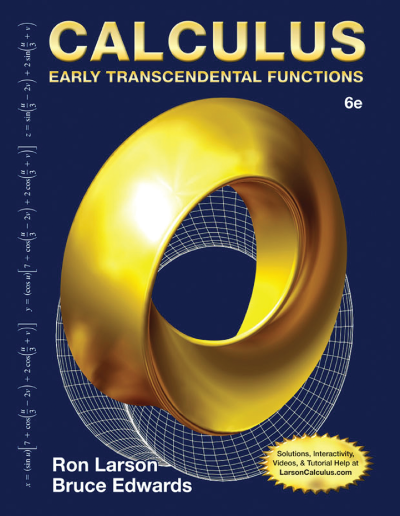Archimedes
(287 – 212 B.C.)
Archimedes was indisputably the greatest scientist and mathematician of ancient times. He is believed to have been born in 287 B.C. in Syracuse, on the island of Sicily, which was then part of Greece. Among Archimedes’s many mathematical achievements were a proof that the value of π lies between 223/71 and 220/70 his introduction of exponents to calculate large numbers, and his determination of the volume of a sphere. He also devised the “screw of Archimedes,” a spiral-shaped pump that is still used along the Nile to draw water for irrigation, and he constructed a mechanical planetarium that was regarded by the ancients as one of the wonders of the world.
Most of what was known of Archimedes has been lost in the passage of time, except that he was the son of an astronomer and was educated in Alexandria. After studying in Egypt for some years with Conon, a Greek mathematician who had been Euclid’s protégé, Archimedes returned to Syracuse. Since Alexandria was the ancient world’s most prominent center of learning and culture, it is perhaps surprising that Archimedes chose to leave. His decision to return to his homeland may have been prompted by his familial relationship to the Syracusan king, Hieron II.
There is no doubt that Hieron had enormous respect and admiration for Archimedes, and frequently sought his assistance with difficult problems. In the course of devising his ingenious solutions, Archimedes often established the foundations of new branches of science and mathematics.
On one occasion, Hieron found that his new galley, a ship constructed of the finest materials and equipped with every known convenience, was so large and heavy that she was deemed impossible to launch. Hieron called Archimedes, who implemented the principle of the lever as a solution to Hieron’s dilemma. Archimedes roped a series of compound pulleys and levers to the vessel, then activated the system with a touch of his hand. At once, the galley glided effortlessly into the water. Archimedes was apparently well pleased with the result, as he was heard to boast, “Give me a place to stand and I will move the earth!”
Archimedes was also asked to determine whether Hieron had been cheated by a goldsmith. The king supplied the craftsman with a measure of gold from which to fashion a crown. Hieron suspected the gold in the new crown had been mixed with silver, but knew of no way to confirm his suspicion without actually cutting the crown. Was there another way to verify the purity of the gold? A method by which this could be accomplished occurred to Archimedes as he soaked in the public bath. He observed that immersion of a body displaces water in an amount equal to the volume of the body. Archimedes realized that he could compare the volume of the crown with that of an equal weight of pure gold. The crown, if pure, would displace the same volume of water as the unformed gold. If tainted with silver, the crown would displace more water. Archimedes was so excited by his discovery that he ran naked from the baths through the streets of Syracuse, shouting, “Eureka! I have found it!” Hastily filling two identical basins with water, Archimedes conducted his experiment and proved Hieron correct in his suspicion. The science of hydrostatics was born, and the goldsmith executed.
Archimedes would have preferred to devote his last years to the study of mathematics, but Sicily’s urgent need to defend itself against invasion inspired the inventions for which Archimedes is perhaps best known today. Carthage and Rome were then engaged in the Punic Wars, and Hieronymus, who succeeded his grandfather King Hieron II, was forced to support one or the other. Judging Carthage the likely victor, Hieronymus allied his nation with the Carthaginian general, Hannibal. Sicily then became a prime target for the Roman general, Marcellus.
Sicily would have been an easy conquest had it not been for Archimedes’s formidable new weapons. His catapults of adjustable range were able to hurl boulders from behind the city walls to the decks of enemy ships. His enormous cranes could grasp and lift ships’ prows, thus setting vessels and their crews on a vertical path to the bottom of the sea. Archimedes also devised a means of destroying enemy craft as far as fifty miles off the Sicilian coast: seventy soldiers, each holding a polished copper shield, stood along the shore; the shields were so effective in directing the rays of the sun that within seconds, the boats were engulfed in flames. Soon, the Roman troops were so intimidated that even the sight of a rope tossed over the walls of the city was enough to send them scrambling toward home, convinced that Archimedes had invented yet another instrument of death against which they had no defense. Recognizing that his men were utterly demoralized, Marcellus abandoned his plans for invasion and settled instead for a siege.
Though Sicily prevailed for three long years, the siege at last proved effective. In 212 B.C., when Archimedes was seventy-five years old, Marcellus invaded Sicily. The general, revering Archimedes as a worthy opponent and recognizing his enormously productive genius, ordered that Archimedes and his home be spared. Several accounts of the death of Archimedes exist, but all agree that he was murdered by a Roman soldier in direct violation of the general’s orders. Marcellus mourned the mathematician’s death and buried him beneath an elaborate marker commemorating Archimedes’s most significant discoveries.
Links
http://www-history.mcs.st-andrews.ac.uk/Biographies/Archimedes.html
https://www.cs.drexel.edu/~crorres/Archimedes/contents.html
References
- Asimov, Isaac. Asimov’s Biographical Encyclopedia of Science and Technology. Garden City, New York: Doubleday & Company, Inc., 1972.
- Boyer, Carl B. A History of Mathematics. 2d ed., rev. Uta C. Merzbach. New York: John Wiley & Sons, Inc., 1991.
- Del Grande, John. “The Method of Archimedes.” Mathematics Teacher 86 (March 1993): 240-243.
- Gillispie, Charles Coulston, ed. Dictionary of Scientific Biography. Vol. I. New York: Charles Scribner’s Sons, 1970.
- Hollingdale, Stuart. Makers of Mathematics. London: Penguin Books, 1989.
- Kline, Morris. Mathematical Thought from Ancient to Modern Times. Vol. I. New York: Oxford University Press, 1972.
- Simmons, George F. Calculus Gems: Brief Lives and Memorable Mathematics. New York: McGraw-Hill, Inc., 1992.











